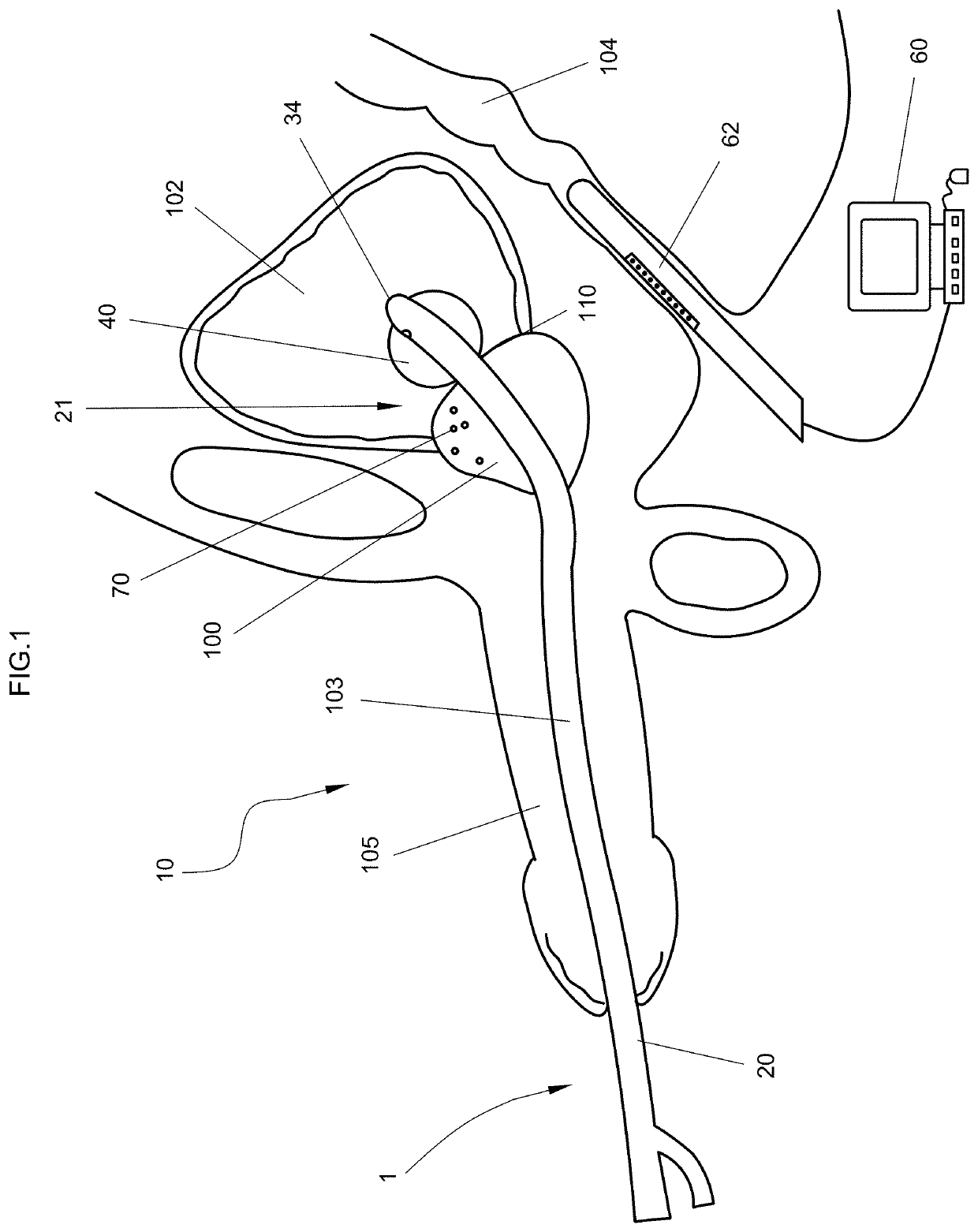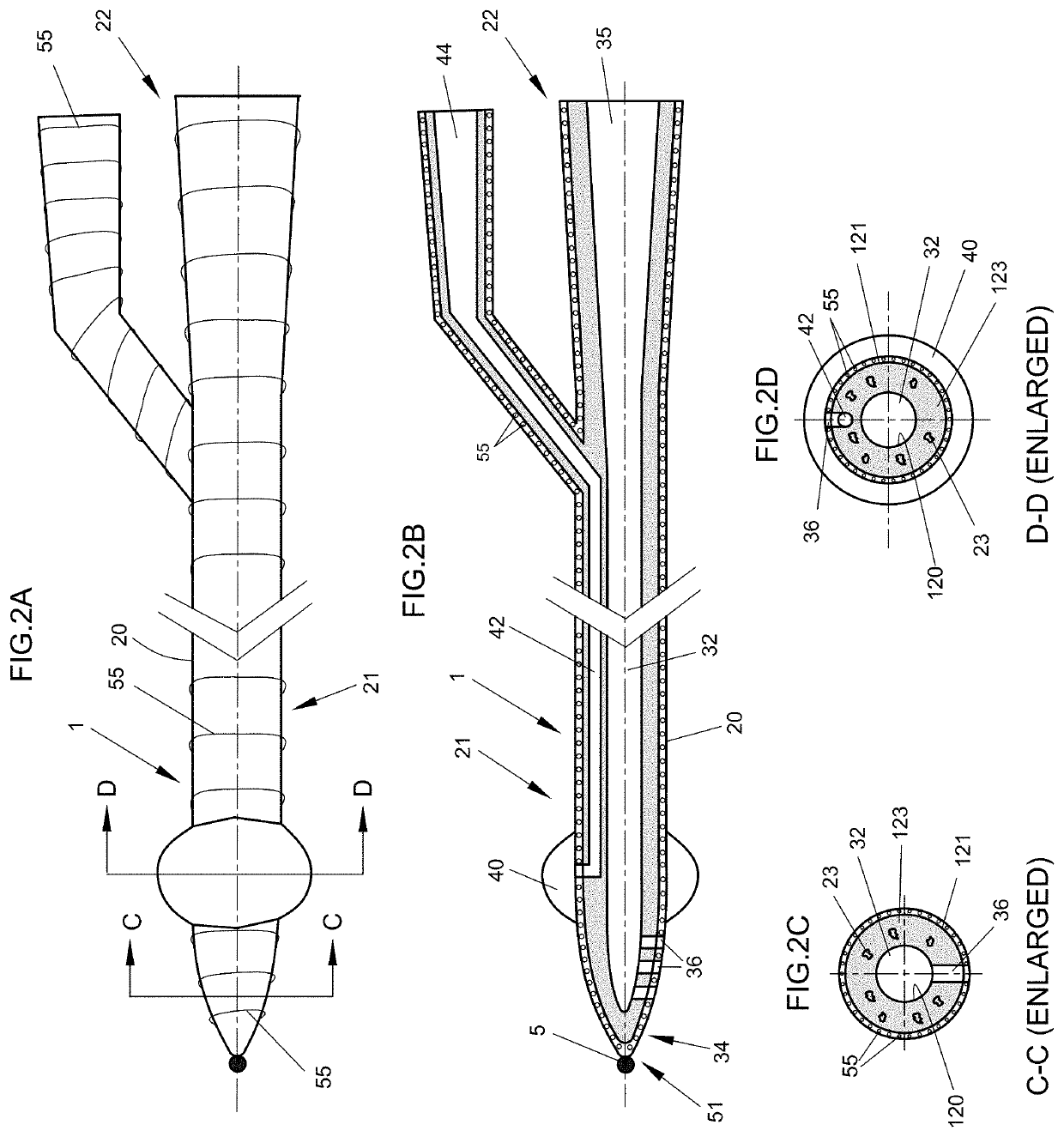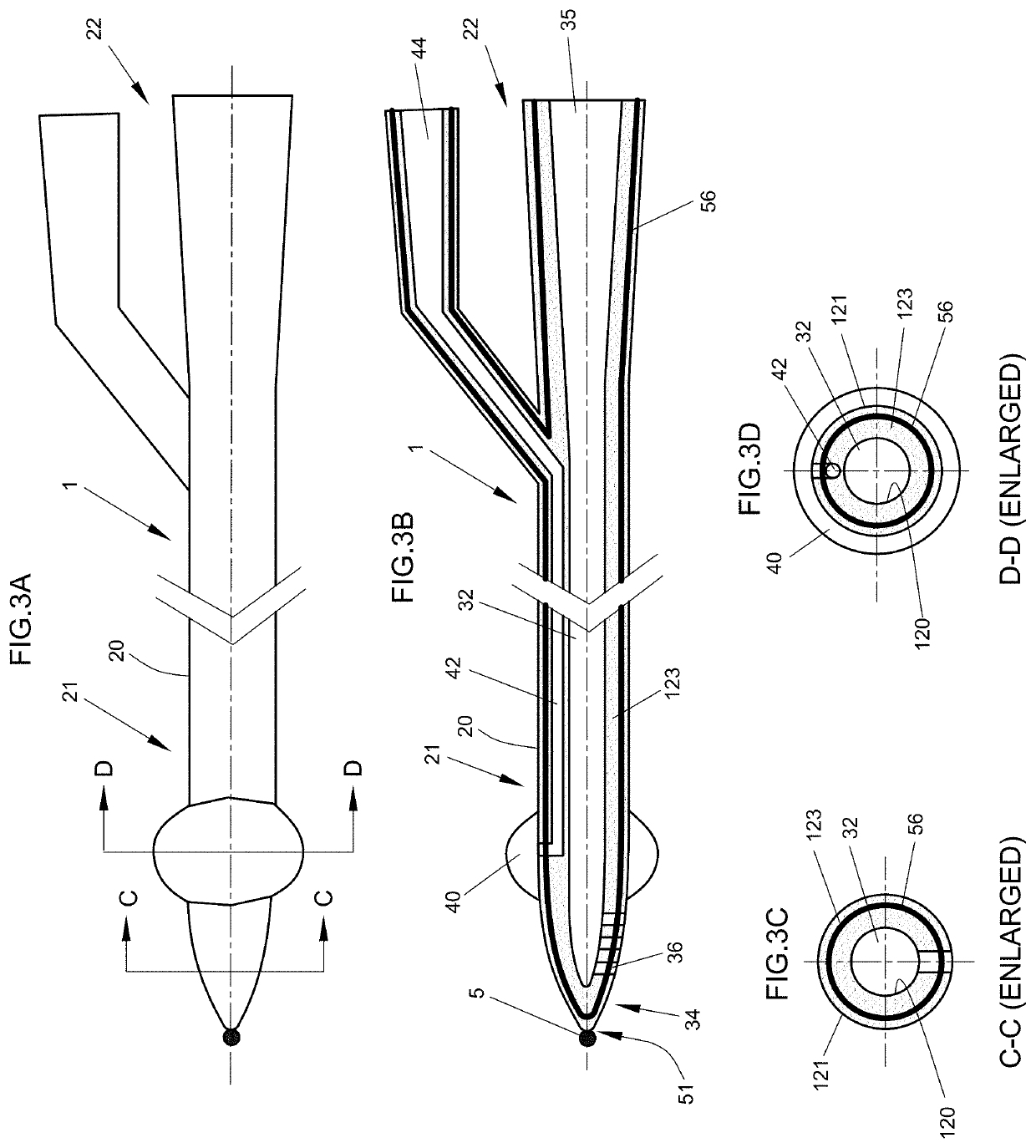Echo-opaque urethral catheter
a urethral catheter and echo-opaque technology, applied in the field of urethral catheter identification and treatment devices, can solve the problems of increasing the morbidity and/or intra-operative mortality of patients, destroying tumors, and unable to achieve desirable surgery for prostate removal, etc., to achieve the effect of facilitating the precise placement of treatment elements
- Summary
- Abstract
- Description
- Claims
- Application Information
AI Technical Summary
Benefits of technology
Problems solved by technology
Method used
Image
Examples
Embodiment Construction
[0040]As shown in FIG. 1, the present invention is directed towards an echo-opaque identification device or a urethra identification system, generally indicated as 10, and further to a method of identifying a patient's urethral anatomical course, in real time in order to aid in the precise placement of a treatment element into the patient's prostate 100. However, the present invention is not limited to this application and can be utilized to identify any other tubular anatomic structure. A desired method of the present invention relates to the effective placement of a brachytherapy radioactive seed and / or a cryoablation probe, with precision, at a desired location within the patient's prostate 100.
[0041]Looking first to the illustrated embodiment of the urethra identification system 10, the identification system 10 includes an echo-opaque catheter 1, such as a urethral catheter 1, and an imaging device 60. In particular, the echo-opaque catheter 1 includes an elongated flexible cath...
PUM
| Property | Measurement | Unit |
|---|---|---|
| flexible | aaaaa | aaaaa |
| ultrasound imaging | aaaaa | aaaaa |
| ultrasound | aaaaa | aaaaa |
Abstract
Description
Claims
Application Information
 Login to View More
Login to View More - R&D
- Intellectual Property
- Life Sciences
- Materials
- Tech Scout
- Unparalleled Data Quality
- Higher Quality Content
- 60% Fewer Hallucinations
Browse by: Latest US Patents, China's latest patents, Technical Efficacy Thesaurus, Application Domain, Technology Topic, Popular Technical Reports.
© 2025 PatSnap. All rights reserved.Legal|Privacy policy|Modern Slavery Act Transparency Statement|Sitemap|About US| Contact US: help@patsnap.com



